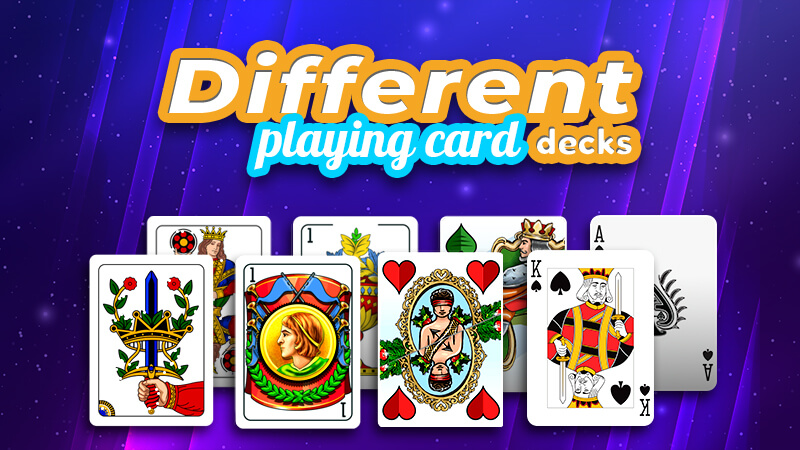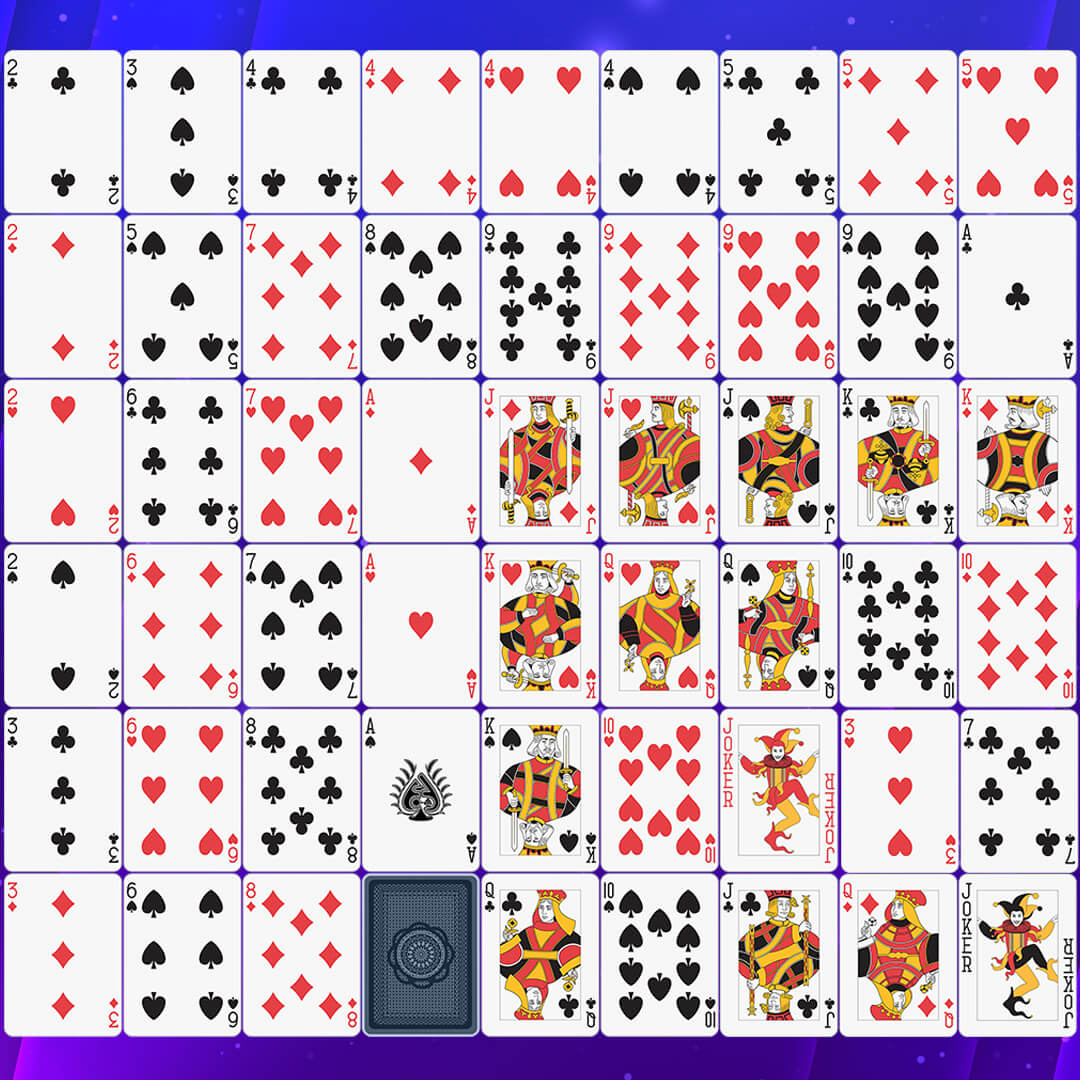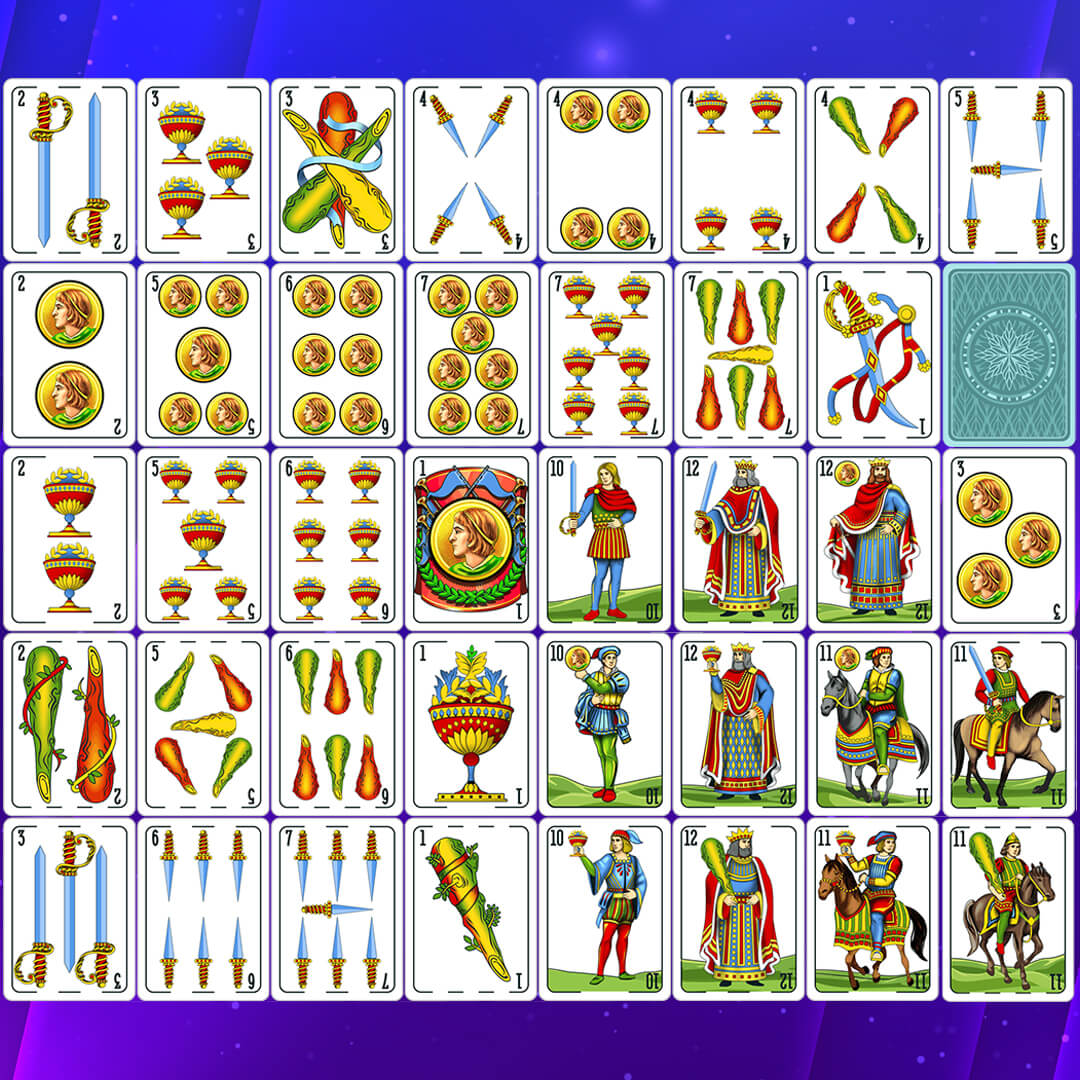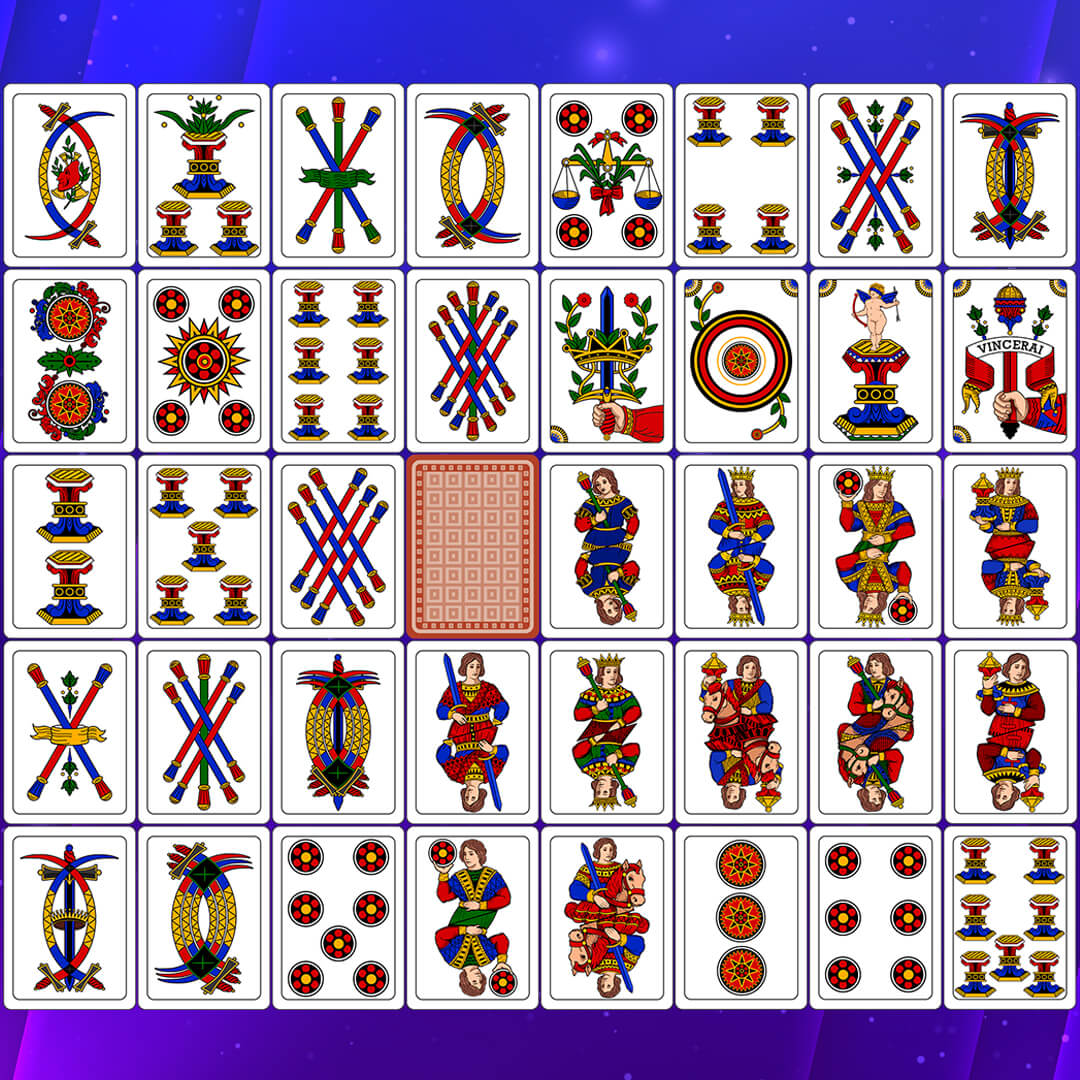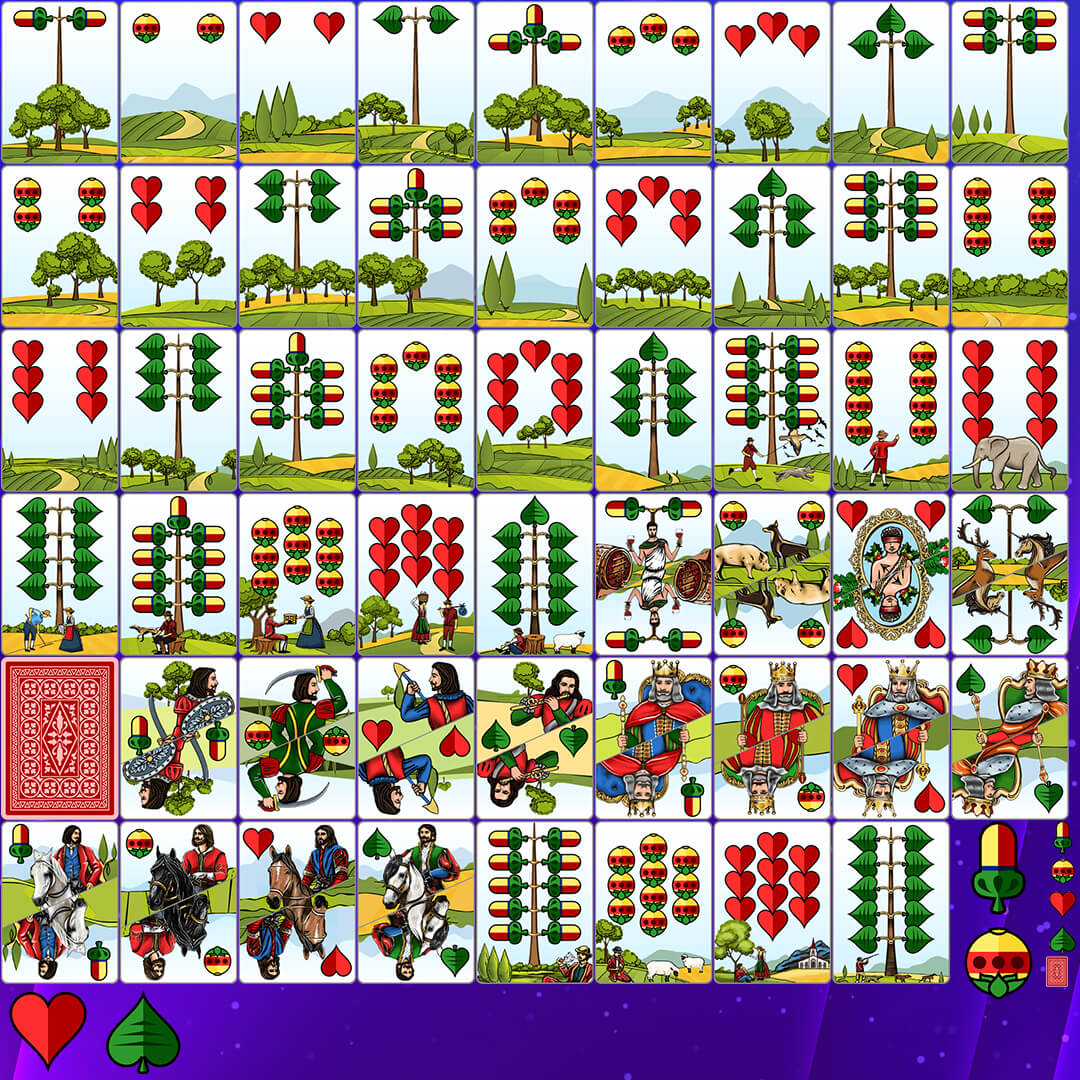But exactly how many cards are in a deck? The right answer is – it depends. Most of the modern card decks consist of 40 to 52 cards.
In this article, we’ll embark on an expedition through the enthralling universe of card decks, delving into their diverse transformations across history.
1. French-suited playing cards
Number of cards in a deck: 24 to 52 depending on the game
Renowned for their intricate designs and exquisite craftsmanship, French playing cards have transcended borders and become internationally recognized game symbols. These cards, characterized by their suits of hearts, diamonds, clubs, and spades, have a storied history that dates back to the 16th century.
The elegant court figures, featuring kings, queens, and jacks, add a touch of regality to each deck. The ornate back patterns, often featuring intricate geometric designs or floral motifs, showcase meticulous attention to detail. The enduring popularity of French playing cards can be attributed to their timeless appeal, making them a favorite choice for casual gaming, professional tournaments, and collectors alike.
2. Spanish-suited playing cards
Number of cards in a deck: 40 or 48 depending on the game
The Spanish National pattern, also known as the Old Catalan pattern, originated in Barcelona during the 17th century. One of the notable features of Spanish playing cards is the four suits: coins, cups, swords, and clubs. Each suit is a symbolic representation, with coins symbolizing wealth, cups representing emotions and relationships, swords signifying conflict or challenges, and clubs embodying power and authority.
There are several patterns and mainly:
- Old Catalan;
- Cádiz;
- Modern Catalan;
- Aluette;
- Piacentine;
- Romagnole.
Spanish playing cards have played a significant role in cultural traditions and divination practices. The cards have been utilized for centuries in Spain for fortune-telling and predicting the future. The practice of cartomancy, or reading the cards, involves interpreting the symbols and combinations to provide insights and guidance.
3. Italian-suited playing cards
Number of cards in a deck: 40
Italian playing cards, known as Carte da Gioco, have distinct suits and elegant designs. One of the defining features of Italian playing cards is the inclusion of three main suits: swords, cups, and coins. Each suit carries a symbolic meaning, with swords representing power and conflict, cups signifying emotions and relationships, and coins embodying wealth. Popular games using the Italian card deck include Scopa, Briscola, Tressette, Bestia, and Sette e mezzo.
There are several patterns:
- Bergamasche;
- Bresciane;
- Trentine;
- Trevigiane;
- Triestine;
- Primiera Bolognese.
The court cards, featuring kings, queens, and knights, boast intricate details and elaborate attire. The illustrations often reflect historical and mythological themes, incorporating Italian art and cultural elements. Italian playing cards have been used to play traditional Italian card games, and have inspired various forms of art, from paintings to literature.
4. German-suited playing cards
Number of cards in a deck: 32 or 36 depending on the game
German playing cards feature four suits: hearts, bells, acorns, and leaves, symbolizing love, wealth, strength, and growth, respectively. The court cards depicting kings, queens, and knaves exhibit traditional German costumes, often reflecting different regions and historical periods.
There are several patterns:
- Saxon;
- Prussian-Silesian;
- New Altenburg;
- Bavarian;
- Franconian;
- Salzburg.
Schnapsen, Schafkopf, and Doppelkopf are popular German card games that utilize specialized decks. Furthermore, they have been the subject of collectors’ fascination. Vintage German card decks, with their historical significance and unique designs, have become sought-after items among card enthusiasts and collectors worldwide.
Now check out our article on the most popular card games in the world.


